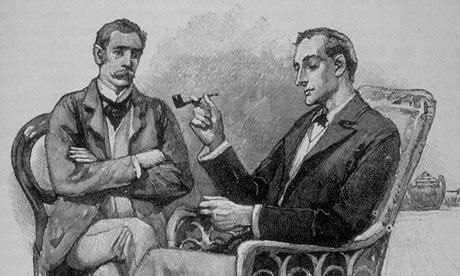Culture and Curriculum
Education is a major topic in the discussion of economic equality and upward mobility in America, for it is a reliable factor in predicting things like a future level of income, job satisfaction, quality of life and even life expectancy. Success in education often turns into success in life, but what factors determine the success or failure of students in the education system? As it turns out there are many; however, factors like the education level of parents, family income, and social composition of a school’s student body are paramount.
The affluence and education level of a student’s parents are a powerful predictors in determining student outcomes. This is because, according to Robert Putnam the Malkin Professor of Public Policy at Harvard university, “Upper-class parents generally have better information about school quality than lower-class parents and are better able to afford houses in the right areas” (164). This statement implies that there are better educations being offered in the public schools of affluent neighborhoods compared to that of poor neighborhoods and points out that the wealthy can afford to live near schools that offer these better educations. More money directly translates to better schools—meaning better teachers and more extracurricular programs. Furthermore, as Putnam points out, “qualitative studies have consistently found exceptionally wide differences in academic outcomes between schools attended by affluent kids and schools attended by their impoverished counterparts” (163). In other words, we can reasonably predict how successful a child will be in their pursuit of education based on nothing more than knowing if the school they are attending is in a rich or poor neighborhood. In fact, studies have shown that the academic achievement gap between low and high income schools has widened 30-40 percent between 1976 and 2001—throughout all racial groups (Putnam 161). Without a doubt, it seems logical to assume that these differences between the quality of education offered in wealthy and poor schools would be the root of the gap in student outcomes; however, this may not be the smoking gun it seems. According to James Heckman, Nobel Memorial Prize winner in economics, “the gaps in cognitive achievement by level of maternal education that we observe at age eighteen—powerful predictors of who goes to college and who does not—are mostly present at age six, when children enter school. Schooling—unequal as it is in America—plays only a minor role in alleviating or creating test score gaps” (qtd. in Robert Putnam 162). What James is essentially saying is, the cognitive measures observed by testing and have been determined to be powerful markers for predicting future outcomes as they relate to success in education, are present as children are just entering the school. This means that the quality of curriculum may not be the root of these testable cognitive achievement gaps between rich and poor schools.
So, what is the root of this achievement gap? It has been argued that, the differences between the student body of low income schools and high income schools affect student outcomes more than their respective differences in curriculum, funding, faculty, or any other measurable factor. Researcher James Coleman claims, “The social composition of the student body is more highly related to achievement, independent of the students own social background, than is any other school factor.” In other words, the demographics of a student’s peers (such as, family income, national background, self-identification, faith, and political affiliation) has a more powerful effect on a student’s ability to succeed than anything else. Personally, I agree with James that peer influence is a huge factor in a student’s behavior and their eventual outcome. Put in my mother’s eloquent words, “monkey see; monkey do.” This was something my mom would say to me throughout my childhood when she saw me acting out behaviors I learned from the people around me—typically the behaviors she didn’t approve of. Her words reflect the reality that we learn a lot form the people we are around. As humans, we learn social norms (like acceptable behaviors for interacting with our environment, perceived limits and opportunities, what it means to be successful or unsuccessful, and how to interpret the world around us from the people we are around) through a process called enculturation. Essentially, enculturation is the transference or “download” of a groups culture/values, from that group, to an individual by means of osmosis. It makes sense that we would be greatly affected by the collective culture of our peers, which, per the testimonies of Putnam’s case studies Isabella and Sofia, are notably different in high and low income schools. In a comparison between wealthy high school “Troy” and poor high school “ Santa Ana,” Putnam claims that, “ Students at Santa Ana are four times more likely than students at Troy to drop out, roughly ten times more likely to be truant or suspended, and only one third as likely to take the SAT” (137). Roberts comparison clearly illustrates the effect of these cultural differences between these two schools as they relate to student success. Accordingly, if the popular culture of a student body values academic achievement and effort then even students—a part of that body—coming from families without those values will fare better because they will feel pressure to socially identify with their peers. Likewise, the opposite is true, and when the popular culture of a student body doesn’t value academic achievement or effort, then even the students with an appreciation for learning won’t preform as well—due to them adapting to their environment.
The culture in poor neighborhoods and rich neighborhoods are obviously different, but what is it about the culture of poor neighborhoods that stifles children’s ability to succeed in school? There may not be a simple answer to this question, but my story may illuminate one possibility. When I was a child, I can remember having extreme feelings of unworthiness without any real provocation. I remember crying and wishing someone more deserving would take my place, so they could have the things and opportunities I had—because in my mind they would do something more with my life. I grew up in a nice area in southern California, I didn’t grow up poor, and I had a stable home life; however, the feelings I was having was something that (I discovered later in life) was a common feature in the minds of my mother’s family and the communities she grew up in. I felt less than the people around me, and I often felt worthless, and my mother (a third-generation Mexican American) had similar feelings about herself. Except, in my mother’s case she had some life experiences to justify those feelings. She grew up in a poor Mexican neighborhood and was raised by her single mother along with her four older brothers and sisters. Her mother was an alcoholic and her father wasn’t around, and there was little adult supervision. My mother was exposed to drugs at a young age by her brothers and sisters and their friends, was sexually abused, and she dropped out of school at fifteen years old. My mother told me that when she was growing up, the best hopes she had for herself was to be “a single mother on welfare” because that was what the most successful people she knew were—the least successful were dead, junkies, or homeless. Today, three of my mother’s four brothers and sisters are dead because of drug abuse. They say things like this “run in the family,” and I can see why. My mother’s experiences shaped her personality and as result have effected mine as well. These destructive patterns are a result of traumas that are passed from parent to child, and even neighbor to neighbor.
I was talking to my father (a third-generation Italian American) about this idea of inherited trauma and he offered me his perspective: He said he saw in my mother’s family and community a crushed moral and a sense of hopelessness in regards to achieving any kind of success in life. From his point of view, as a white man moving to California from upstate New York, he attributed this hopelessness to the subjugation of the Mexican people in California and said, “they were treated like crap, segregated, made to feel less than the whites for generations.” This was in sharp contrast to the what he says his grandfather experienced coming from Italy. From his point of view, the self-limiting and destructive mindset he saw in my mother’s family, which reflected the culture of the poor communities she was raised in, was related at least in part to their treatment by the ruling class. I don’t know if my father is correct about this being root of the hopelessness I observed in my mother’s side of the family; it may just be an effect of poverty. However, regardless of it’s root—it does exist—and I feel that it is learned behavior which means it can be unlearned.
Our perceptions of self—the internal narrative we call our identity—determines, in large, how we behave and what we achieve in life. These Identities we carry with us as individuals; however, they are not isolated things; they are a part of a larger context—a cultural identity. This cultural identity is a kind of multi-generational mind from which we inherit psychological adaptations that have come from our people’s history of triumphs and traumas. These adaptations contribute to many of our characteristics as individuals such as a person’s confidence, self-esteem, optimism, as well as things like pessimism, depression, feelings of unworthiness; these characteristics, undeniably effect where we end up in life. In conclusion, I believe that there is a deeper issue, than unequal schools and funding, causing the gaps in education between rich and poor areas, and that is cultural inheritance. Traumas and self-limiting cultural identities are the inheritance of many of our poor communities, and I believe if we are to help these communities rise from poverty we first need to somehow heal these cultural wounds.
Works Cited
Putnam, Robert David. Our Kids: The American Dream in Crisis. New York: Simon & Schuster Paperbacks, 2016. Print.




